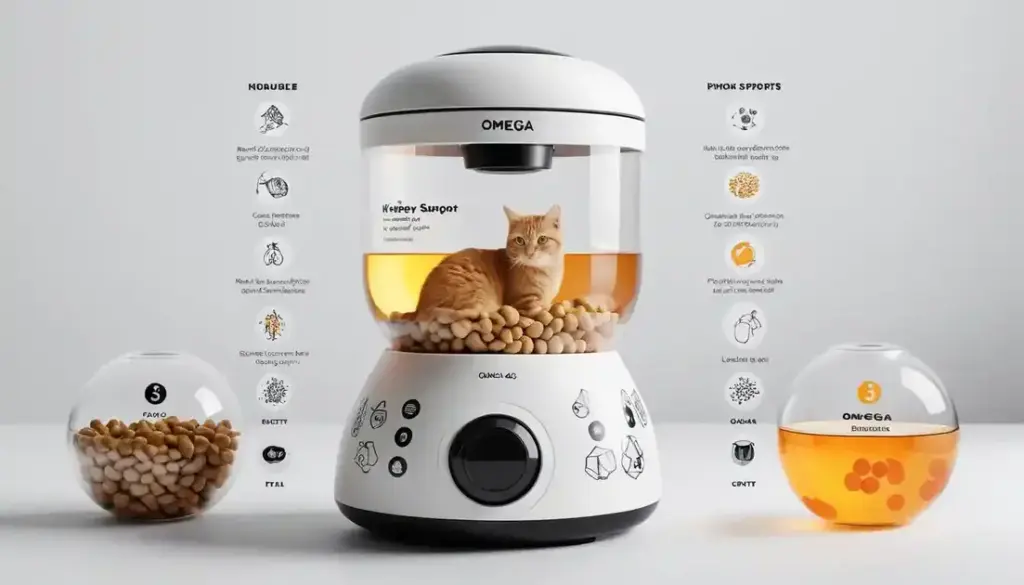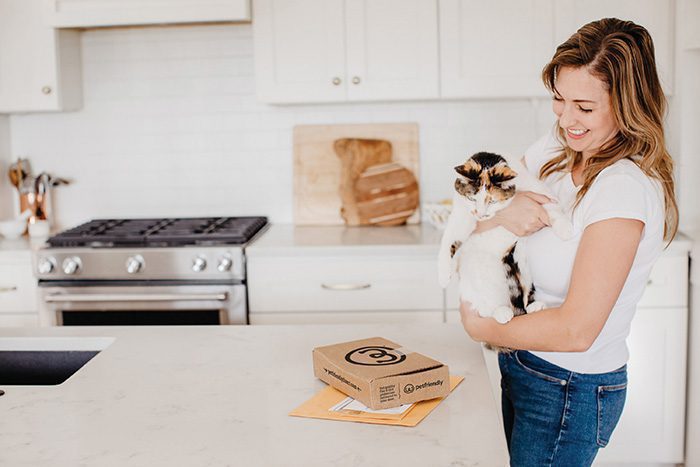When managing kidney disease in cats, selecting the best diets for cats with kidney disease is not just a choice—it’s a critical step in safeguarding their longevity and comfort.
Chronic kidney disease (CKD) demands specialized nutrition to reduce strain on failing kidneys, and research shows that tailored diets can significantly slow disease progression while supporting vitality.
From phosphorus-controlled recipes to moisture-rich wet foods, these therapeutic options balance essential nutrients like omega-3 fatty acids and potassium to address renal needs without compromising palatability.
This guide breaks down the science-backed criteria behind the most effective diets, highlights top-recommended formulations and explains how to transition your cat to a kidney-friendly diet seamlessly.
Introduction to Kidney Disease in Cats
Chronic kidney disease (CKD) is one of the most prevalent health challenges affecting cats, particularly as they enter their senior years.
Characterized by the gradual loss of kidney function, this condition disrupts the body’s ability to filter waste, balance fluids, and regulate essential nutrients.
While CKD is irreversible, early detection and management can significantly slow its progression, preserving a cat’s quality of life for years
What Causes CKD in Cats?
The exact origins of CKD often remain elusive, but research highlights several contributing factors:
- Age: The most definitive risk factor, with incidence rising sharply in cats over 10 years old.
- Dental Disease: Severe periodontal issues correlate with kidney damage, likely due to chronic inflammation.
- Dehydration: Even brief episodes, such as those following anesthesia, can strain delicate kidney tissues
- Toxins and Infections: Exposure to certain medications, pesticides, or infections like feline immunodeficiency virus (FIV) may trigger renal decline.
Recognizing the Signs
Cats are masters at masking discomfort, making CKD symptoms easy to overlook. Early indicators include:
- Increased thirst and urination
- Unexplained weight loss
- Lethargy or reluctance to engage in play
- Poor coat condition or bad breath
As the disease advances, symptoms escalate to vomiting, decreased appetite, and muscle weakness, a sign of severe metabolic imbalance.
Why CKD Demands Attention
Kidneys play a vital role in regulating blood pressure, producing hormones, and maintaining hydration.
When compromised, cats face cascading effects, from anemia to bone health issues. Yet, with tailored care—, ncluding dietary adjustments—many cats with CKD thrive.
By understanding the complexities of this condition, cat owners can partner with veterinarians to implement strategies that support longevity and comfort.
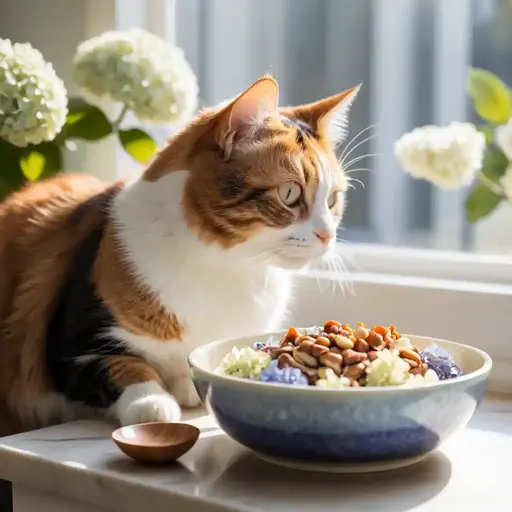
Importance of Diet in CKD Management
When it comes to chronic kidney disease (CKD) in cats, diet isn’t just a suggestion—it’s a cornerstone of care.
While kidneys naturally filter waste and balance nutrients, compromised renal function demands a tailored approach to nutrition.
Studies show that strategic dietary adjustments can slow disease progression, ease symptoms, and enhance a cat’s quality of life. Here’s how:
Key Nutritional Strategies to Support Kidney Health
Phosphorus Control
Elevated phosphorus levels accelerate kidney damage, worsening CKD symptoms like lethargy and poor appetite.
Specialized diets restrict phosphorus while maintaining palatability, helping to preserve remaining kidney function.
High-Quality Protein Moderation
While cats thrive on protein, excessive amounts strain weakened kidneys.
Diets with moderate, highly digestible protein (e.g., egg or poultry) reduce metabolic waste, easing the kidneys’ workload without sacrificing muscle mass.
Potassium Balance
CKD often leads to potassium depletion, causing muscle weakness and heart issues. Renal-support diets include added potassium to counteract this imbalance, supporting energy levels and overall vitality.
Hydration Support
Cats with CKD are prone to dehydration due to increased urination. Moisture-rich foods, like canned or specially formulated wet diets, help maintain hydration, flush toxins, and reduce the risk of urinary complications.
Beyond the Bowl: How Diet Alleviates Symptoms
A well-designed renal diet doesn’t just target lab values—it directly improves daily life.
For example, reduced nausea and better appetite stem from controlled phosphorus and sodium levels.
Meanwhile, omega-3 fatty acids (common in kidney-friendly formulas) combat inflammation, potentially slowing renal decline.
By prioritizing these nutritional pillars, caregivers can transform CKD management from a clinical chore into a proactive, compassionate strategy.
Balancing Protein, Phosphorus, Sodium, and Omega-3s
For cats with chronic kidney disease (CKD), every nutrient plays a pivotal role in managing symptoms and slowing disease progression.
The right balance of protein, phosphorus, sodium, and omega-3 fatty acids can mean the difference between thriving and merely surviving.
Let’s break down why these components matter—and how to optimize them.
Protein: Quality Over Quantity
While protein is essential for muscle maintenance, excessive amounts force the kidneys to work harder.
CKD diets prioritize moderate, high-quality protein (e.g., chicken, egg, or fish) to minimize waste production without sacrificing nutritional value.
Aim for 28–35% protein on a dry matter basis to avoid muscle loss, a common concern in later stages.
Phosphorus: The Silent Aggressor
High phosphorus levels accelerate kidney damage by promoting mineral imbalances and tissue scarring.
Diets restricting phosphorus—ideally to 0.3–0.6% on a dry matter basis—have been shown to preserve renal function and delay disease progression.
Avoid ingredients like bone meal or organ meats, which are phosphorus-dense
Sodium: A Balancing Act
Excess sodium can elevate blood pressure, further stressing compromised kidneys.
CKD-friendly diets maintain sodium levels below 0.3% (dry matter basis) to reduce hypertension risks.
Skip table scraps and processed treats, which often hide sneaky sodium spikes.
Omega-3 Fatty Acids: Anti-Inflammatory Allies
Omega-3s, particularly EPA and DHA from fish oil, combat inflammation and may slow renal decline.
A daily dose of 40 mg/kg EPA + 25 mg/kg DHA is recommended to support kidney health .
Look for diets fortified with these fatty acids or consider vet-approved supplements.
Putting It All Together
The interplay of these nutrients creates a protective shield for feline kidneys.
For example, a moisture-rich canned diet with moderate protein, low phosphorus, and added omega-3s addresses multiple facets of CKD management simultaneously
Always consult your vet to tailor these guidelines to your cat’s stage of disease and preferences.
| Nutrient | Role in CKD Management | Recommended Level |
|---|---|---|
| Protein | Reduces waste, preserves muscle | ~24% (dry matter), high-quality |
| Phosphorus | Slows disease progression | <0.4% (dry matter) |
| Sodium | Manages fluid balance | Reduced levels |
| Omega-3 | Reduces inflammation | Added in renal diets |
| Potassium | Prevents deficiency | Adequate, vet-monitored |
Commercial Renal Diets: A Comparative Review
Commercial renal diets are formulated to meet the nutritional needs of CKD cats. Below is a comparison of popular options:
| Brand/Product | Protein Content | Phosphorus Level | Sodium Level | Forms Available | Pros | Cons |
|---|---|---|---|---|---|---|
| Royal Canin Renal Support | Moderate | Low | Reduced | Wet, Dry | Highly palatable, multiple flavors | Higher cost |
| Hill’s Prescription Diet k/d | Moderate | Low | Reduced | Wet, Dry | Widely available, vet-recommended | Some cats dislike texture |
| Purina Pro Plan Veterinary Diets NF | Moderate | Low | Reduced | Wet, Dry | Affordable, good for picky eaters | Limited flavor options |
- Royal Canin Renal Support: Known for palatability, it’s ideal for cats with reduced appetite.
- Hill’s Prescription Diet k/d: Backed by extensive research, it’s a go-to for many vets.
- Purina Pro Plan Veterinary Diets NF: A budget-friendly option with good nutritional balance.
Consult your veterinarian to choose the best option based on your cat’s preferences and CKD stage.

Homemade Diet Options for Cats with Kidney Disease
For cats with chronic kidney disease (CKD), homemade diets offer unparalleled control over ingredient quality and nutrient balance, but they require meticulous planning.
While commercial renal diets are vet-formulated, some caregivers prefer home-prepared meals to address picky eaters or ingredient sensitivities.
The key lies in adhering to veterinary guidelines to avoid nutrient imbalances that could worsen kidney strain.
Guidelines for Homemade CKD-Friendly Meals
Prioritize Veterinary Oversight
Even “natural” ingredients can be risky. For example, excess phosphorus from bone-in meats or organ meats (e.g., liver) accelerates kidney damage.
A vet or board-certified veterinary nutritionist can tailor recipes to your cat’s stage of CKD, ensuring safe ratios of protein, phosphorus, and sodium.
Follow a Balanced Template
Base recipes on the 80/10/10 ratio: 80% muscle meat (chicken, turkey), 10% bone (for calcium), and 10% organs (limited to low-phosphorus options like heart).
Add supplements like omega-3-rich fish oil or chia seeds to combat inflammation.
Hydration is Non-Negotiable
CKD cats need moisture-rich meals. Incorporate low-sodium broth (unsalted) or water to recipes, and consider blending ingredients into a slurry for cats resistant to wet food .
Sample Recipe: Gentle Chicken & Pumpkin Blend
*Adapted from vet-reviewed guidelines *
Ingredients:
- 1 cup ground chicken (lean, boneless)
- ½ cup cooked basmati rice (easy to digest)
- ¼ cup steamed pumpkin (lowers phosphorus, aids hydration)
- 1 tsp fish oil (for omega-3s)
- Pinch of taurine powder (critical for heart health)
Instructions:
- Cook chicken thoroughly; avoid seasoning.
- Mix with rice, pumpkin, and supplements.
- Serve at room temperature, dividing into 2–3 meals daily.
Avoid Common Pitfalls
- Overdoing “healthy” additives: Too much spinach or carrots can spike potassium.
- Skipping supplements: Homemade diets often lack taurine or calcium, leading to deficiencies.
- Guessing portion sizes: Work with a vet to calculate calories and nutrients per meal
When to Choose Homemade Over Commercial
Some cats thrive on homemade meals due to texture preferences or allergies.
However, studies reveal that 45% of online recipes exceed safe nutrient thresholds for cats.
Always cross-check recipes with tools like the AAFCO nutrient profiles or a vet’s approval.
By blending science-backed nutrition with homemade care, you can create meals that nourish both body and spirit, without compromising kidney health.
Hydration Strategies for Cats with CKD
For cats with chronic kidney disease (CKD), staying hydrated isn’t just about quenching thirst—it’s a lifeline.
Proper hydration helps flush toxins, reduces strain on weakened kidneys, and prevents complications like constipation or urinary blockages.
Yet, cats are notoriously finicky drinkers, making intentional strategies essential. Here’s how to turn hydration into a seamless, even enjoyable, part of their daily routine.
Proven Tactics to Boost Water Consumption
Leverage the Power of Wet Food
Canned diets are 70–80% moisture, making them a stealthy hydration hero. Even adding a spoonful of low-sodium broth (unsalted) to meals can entice cats to lap up extra fluids.
Upgrade Water Stations
Cats prefer fresh, moving water. Invest in a cat fountain with a gentle flow—many felines drink 50% more from fountains than stagnant bowls. Place multiple stations around the house to mimic their natural grazing behavior.
Room Temperature Matters
Cold water can dull flavor, discouraging sips. Serve water and broth at room temperature, and avoid metal bowls, which some cats find off-putting.
Flavor It Up (Safely)
A splash of tuna juice (no added salt) or a hint of sodium-free chicken broth in water bowls can pique interest. Always avoid oonionsor garlic, which are toxic.
The Science Behind Hydration Habits
Dehydration worsens CKD by concentrating waste products in the bloodstream, forcing the kidneys to work harder.
Simple fixes, like placing water bowls away from food (to prevent cross-contamination of smells) or using wide, shallow dishes (to avoid whisker stress), can make a measurable difference.
Avoid These Common Missteps
- Overlooking Sodium: High-sodium broths or treats disrupt fluid balance—opt for “no salt added” options.
- Forcing Fluids: Never syringe water unless advised by a vet; stress can worsen dehydration.
- Neglecting Routine: Clean bowls daily and refresh water frequently, as stale water discourages drinking.
When to Get Creative
For resistant drinkers, try ice cubes made from low-sodium broth, or scatter water bowls with a few drops of catnip oil. The goal is to make hydration feel like a choice, not a chore.
By blending these strategies, you’ll not only support kidney health but also nurture a happier, more vibrant cat.
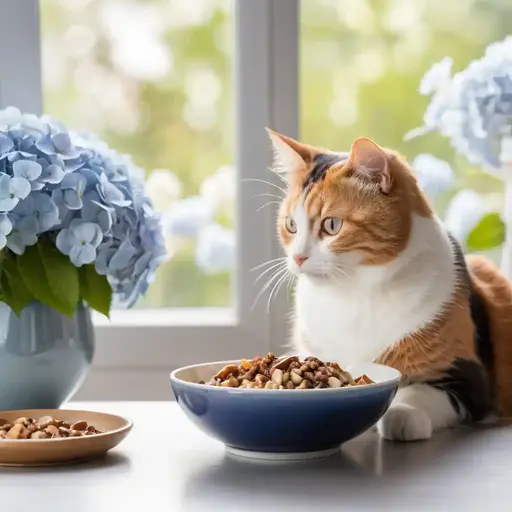
Supplements and Therapies: Enhancing Care with Caution
For cats with chronic kidney disease (CKD), supplements and therapies can bridge critical gaps in nutrition and symptom management—but they’re not one-size-fits-all solutions.
When used strategically under veterinary guidance, these tools address specific deficiencies and complications, improving both longevity and comfort.
Key Supplements and Their Roles
Omega-3 Fatty Acids
Found in fish oil or algae-based supplements, omega-3s reduce inflammation and may slow kidney decline.
Studies suggest a ratio of EPA to DHA around 40:25 mg/kg daily supports renal health, but overdosing can lead to gastrointestinal upset..
Phosphate Binders
As kidneys struggle to excrete phosphorus, binders like aluminum hydroxide or lanthanum carbonate “trap” excess phosphorus in the gut, preventing absorption.
These must be given with meals to be effective and require regular bloodwork to avoid imbalances.
Potassium Supplements
CKD often leads to hypokalemia (low potassium), causing muscle weakness. Oral gels or powders can restore balance, but over-supplementation risks cardiac issues—always pair with blood monitoring.
Vitamin D and Calcium
Impaired kidney function disrupts vitamin D activation, leading to calcium malabsorption.
Calcitriol (a synthetic vitamin D analog) paired with calcium supplements supports bone health, but the dose must align with blood levels to avoid vascular calcification.
Erythropoietin (EPO)
Anemia is common in advanced CKD. Human recombinant EPO stimulates red blood cell production, but long-term use risks antibody formation, which can worsen anemia.
Cautions and Considerations
- Avoid Self-Prescribing: Supplements like vitamin C or B-complex can acidify urine or interact with medications—always consult a vet.
- Monitor Interactions: Phosphate binders may interfere with the absorption of other medications (e.g., levothyroxine).
- Quality Matters: Use veterinary-approved brands—human supplements often contain additives toxic to cats.
When to Say “No” to Supplements
Some therapies, like alkalinization agents or antioxidants (e.g., vitamin E), show mixed evidence in cats. For example, excess vitamin E can impair blood clotting .
Similarly, appetite stimulants (e.g., mirtazapine) should only be used if dehydration and nausea are ruled out first.
Monitoring Your Cat’s Health and Adjusting the Diet
Managing chronic kidney disease (CKD) in cats isn’t a “set it and forget it” task—it’s a dynamic process requiring regular observation and adaptation.
Even the most carefully crafted diet needs tweaks as your cat’s condition evolves, and subtle changes in behavior or lab results can signal the need for adjustments. Here’s how to stay proactive.
Tracking Key Health Metrics
Weight Checks
Sudden weight loss or gain can indicate inadequate caloric intake or fluid retention. Weigh your cat weekly using a digital scale, and log trends to share with your vet.
Hydration Status
Monitor skin elasticity (gently pinch the scruff; if it snaps back slowly, dehydration may be present) and litter box output. Reduced urination or overly dry gums warrant a vet visit.
Bloodwork and Urinalysis
Regular tests track markers like blood urea nitrogen (BUN), creatinine, and phosphorus. Rising levels may signal the need for stricter phosphorus restriction or hydration support.
Adjusting the Diet Over Time
- Portion Sizes: Appetite fluctuations are common. If your cat eats less, divide meals into smaller, more frequent servings—warmed slightly to enhance aroma.
- Recipe Tweaks: As CKD progresses, transition to higher-calorie, lower-phosphorus options. For example, swap chicken breast for heart (lower phosphorus) or add a teaspoon of low-sodium broth for appeal.
- Hydration Boosts: If your cat resists drinking, reintroduce moisture-rich snacks like watermelon cubes (seedless) or sodium-free bone broth ice chips
When to Revisit the Vet
- Persistent Vomiting or Lethargy would indicate electrolyte imbalances or uremic toxins.
- Lateau in Lab Results: If phosphorus levels remain high despite a renal diet, phosphate binders may be necessary.
- Stage Transitions: Moving from early to advanced CKD requires recalibrating protein and potassium levels to prevent malnutrition or cardiac strain.
The Role of Observation
Cats rarely vocalize discomfort, so subtle cues matter. A once-vibrant coat turning dull, reduced grooming, or avoiding the litter box can all hint at dietary imbalances.
Keep a journal or use a tracking app to note patterns—this data becomes invaluable during vet consultations.
By blending vigilance with flexibility, you’ll ensure your cat’s diet remains a source of vitality, not stress. Remember, CKD management isn’t about perfection—it’s about progress.
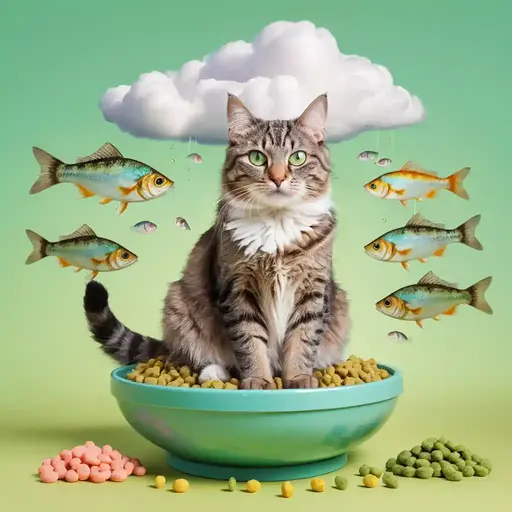
Transitioning to a Renal Diet
Cats thrive on routine, making dietary changes a delicate dance—e, especially when introducing a kidney-supportive diet.
Studies show that over 90% of cats will accept a therapeutic food with patience and a strategic approach but the process requires empathy for their finicky preferences. Here’s how to navigate this transition smoothly.
The Gradual Transition Method
Rushing the switch often backfires. Instead, follow a phased plan to ease your cat into the new diet:
- Days 1–2: Mix 25% therapeutic food with 75% current food.
- Days 3–4: Shift to a 50/50 blend of old and new.
- Days 5–6: Offer 75% therapeutic food and 25% original diet.
- Day 7: Serve 100% therapeutic food.
This method respects your cat’s aversion to abrupt changes, reducing stress and mealtime resistance.
Boosting Appeal for Picky Palates
Therapeutic diets are formulated for health, but aroma and texture matter just as much:
- Warm the Food: Slight heating enhances scent, a key factor for cats.
- Add Moisture: Splash low-sodium broth (unsalted) or water to create a soupy texture
- Top with Flavor: A teaspoon of fish oil or a sprinkle of brewer’s yeast can entice hesitant eaters .
Avoid garlic or onion-based additives, which are toxic, and steer clear of high-phosphorus treats like cheese.
When Selectivity Persists
If your cat resists after 10–14 days, consider these adjustments:
- Offer Variety: Rotate between canned, dry, and liquid formulations (e.g., CliniCare RF) to find a preferred texture
- Small, Frequent Meals: Serve 3–4 smaller portions daily to mimic natural grazing habits.
- Hand-Feeding: For anxious cats, placing a bite-sized portion on your finger can spark curiosity.
If refusal continues beyond two weeks, consult your vet—prolonged appetite loss can worsen kidney strain
Myths and Facts About Diets for Kidney Disease
Navigating dietary advice for cats with chronic kidney disease (CKD) can feel like deciphering a maze of conflicting opinions. Let’s separate fact from fiction to empower informed decisions about your cat’s nutrition.
Myth 1: “My Cat Isn’t Showing Symptoms, So No Diet Change Is Needed”
Fact: CKD is often silent until significant damage occurs. Cats can lose 75% of kidney function before symptoms like increased thirst or lethargy appear.
Early dietary adjustments, such as phosphorus restriction, can slow progression even in asymptomatic stages.
Myth 2: “Low-Protein Diets Are Always Harmful”
Fact: While cats require protein, CKD diets focus on quality and balance, not just quantity.
Excessive protein strains the kidneys, but moderate, highly digestible sources (e.g., poultry) preserve muscle mass while reducing waste.
Myth 3: “Homemade Diets Are Automatically Safer”
Fact: Homemade meals risk nutrient imbalances, ike excessive phosphorus from bone-in meats or potassium deficiencies.
Myth 4: “Cats Will Drink Enough Water on Their Own”
Fact: Cats instinctively have low thirst drives, and CKD exacerbates dehydration risks.
Wet diets (70–80% moisture) are critical for hydration, as water bowls alone rarely suffice. Adding broth or using fountains can help, but moisture-rich food remains foundational.
Conclusion
Chronic kidney disease (CKD) may feel daunting, but with the right tools, you can transform your cat’s health journey.
By prioritizing phosphorus-controlled nutrition, hydration strategies, and regular veterinary collaboration, caregivers often see remarkable improvements in their cats’ vitality, even in advanced stages.
Remember, CKD management isn’t about restriction; it’s about recalibrating meals and routines to align with your cat’s evolving needs.
Key Takeaways
- Early intervention with renal-supportive diets can slow disease progression by up to 50%.
- Hydration is non-negotiable: Wet foods and water-rich snacks help flush toxins and reduce kidney strain.
- Myth-busting matters: Reject outdated advice (e.g., “all low-protein diets starve cats”) and lean on evidence-based practices .
Further Reading and Resources
For those eager to dive deeper, these vet-approved resources offer clarity and support:
Final Thought
Every cat’s journey with CKD is unique, but one truth remains constant: informed, compassionate care makes all the difference. Revisit this guide as needed, lean on your veterinary team, and celebrate the small victories—keep a hearty appetite or a playful afternoon.


